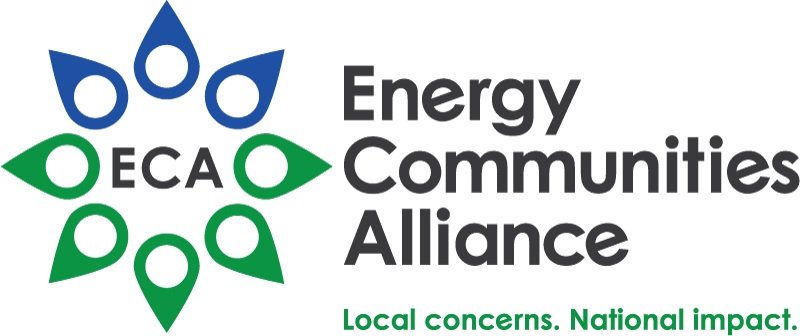DETAILED DOE DISCRETIONARY BUDGET REQUEST DOCUMENT SUMMARY RELEASED
Last Friday (May, 30), the Department of Energy (DOE) Appendix for the President’s Discretionary Budget Request was released, as a part of Technical Supplement to the 2026 Budget (Request) Appendix. In conjunction, DOE released a summary of its funding, the Budget in Brief. See below for a summary of the budget request line items that are relevant to ECA members and energy communities compared to previous years for DOE. This includes an in-depth dive into the Office of Environmental Management (EM) Defense and Non-Defense Cleanup Budgets.
As noted, this is the President’s REQUEST for a budget. Congress will be holding budget hearings over the next couple of weeks to “mark-up” the President’s request and develop the actual budget for all federal agencies. Congress typically amends President budget requests. The House and Senate Energy and Water Development Subcommittees on Appropriations is responsible for appropriations pertaining to DOE and NNSA programs.
Below we have included a breakdown by site for EM budget request. We suggest that you review the budget brief for additional analysis by site. We note that one the largest cuts in the EM program is to the WIPP site, which is relied on heavily by every other EM site and by NNSA for disposal for national defense TRU waste – a critical national defense mission.
Source: Department of Energy FY2026 Congressional Justification: Budget in Brief
Total discretionary requested funding for DOE in FY2026 is $46,320,000,000 with $33,840,000,000 of that number being allocated to Defense programs, and $12,480,000,000 to non-defense programs. This is a decrease of $3,500,000,000 billion, or 7 percent, from the FY2025 Enacted Level.
The National Nuclear Security Administration (NNSA) would see a topline of $25,260,000,000 for FY2026, that number rising to $30,042,000,000 when accounting for Reconciliation resources, an increase of 24% over FY2025. NNSA would experience the following funding adjustments to its programs:
Weapons Activities would see an increased budget and staffing of $24,856,400,000, up from $19,293,000,000 in FY2025.
Defense Nuclear Nonproliferation would see a decreased budget of 2,284,000,000, down from 2,396,000,000 in FY2025.
Naval Reactors would see an increased budget of $2,346,000,000 up from $1,946,000,000 in FY2025.
The Office of Environmental Management (EM) would see a decreases in funding of $389,249,000, down to $8,092,751,000 in FY2026 from 8,428,000,000 in FY2025. A question that is always asked is what the impact is, if any, to state cleanup agreements and to the attempt to accelerate cleanup if the budget is decreased at the sites below (there are also increases in the request). See a breakdown of cleanup line items by site below:
Source: Department of Energy FY2026 Congressional Justification: Budget in Brief
The Office of Nuclear Energy (NE) budget request is below:
Source: Department of Energy FY2026 Congressional Justification: Budget in Brief
The Office of Science budget request for FY2026 is $7,092,000,000, down from $8,240,000,000 in FY2025.
The Legacy Management Program would see an increase in funding to $200,258,000 in FY2026, up from $196,302,000 in FY2025.
Activities include support for Light Water Reactor Sustainability through cost-shared efforts to extend the life and improve the economic competitiveness of the existing commercial nuclear reactor fleet through research in the areas of materials aging and degradation, safety margin characterization, safety technologies, and instrumentation and controls; research into other Advanced Reactor Technologies, such as fast reactor technologies and high temperature reactor technologies for the production of electricity and high temperature process heat to improve the economic competitiveness and flexibility of nuclear energy as a resource capable of meeting the Nation's energy goals; and Integrated Energy Systems.
The Request supports R&D on advanced fuel cycle technologies that have the potential to accelerate progress on managing and disposing of the nation’s spent fuel and high-level waste, including efforts to improve resource utilization and energy generation, reduce waste generation, and limit proliferation risk. Advancements in fuel cycle technologies support the enhanced availability, economics, and security of nuclear-generated electricity in the United States, further enhancing U.S. energy independence and economic competitiveness. This program also contributes to the Department’s policies and programs for ensuring a reliable and economic nuclear fuel supply including the availability of High-Assay Low-Enriched Uranium (HALEU), with funding provided in the Inflation Reduction Act of 2022 (IRA). Also included in this program are R&D efforts investigating options for the permanent disposition of spent nuclear fuel.
The Request supports R&D and strategic investments in research capabilities to develop innovative and crosscutting nuclear energy technologies essential for nuclear energy to be a major contributor to unleashing America’s energy dominance. This program funds high-priority R&D on advanced manufacturing methods, fabrication, and instrumentation technologies that includes strong investments in modeling and simulation tools and provides access to unique nuclear energy research capabilities through its Nuclear Science User Facilities and the Gateway for Accelerated Innovation in Nuclear (GAIN) initiative (sub-program.
The Advanced Reactor Demonstration Program (ARDP) focuses Departmental and non-federal resources on expediting development, demonstration, and deployment of commercial reactor technologies. The program partners with U.S. based teams to address technical, operational, and regulatory challenges to enable commercialization of a diverse set of advanced nuclear reactor designs. $20 million is included for two existing demonstration projects.
Click here to review the Appendix document published by the OMB, and click here to review the DOE Budget in Brief. The Department of Energy Appendix can be found in the Appendix document beginning on Page 281.
To learn more about how the budget and appropriations process impacts DOE programs, visit ECA’s website. ECA looks forward to providing updates on the budget as they develop, so be sure to subscribe to the ECA Bulletin for future updates!
